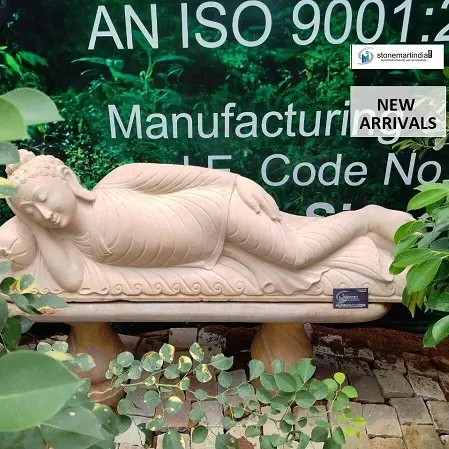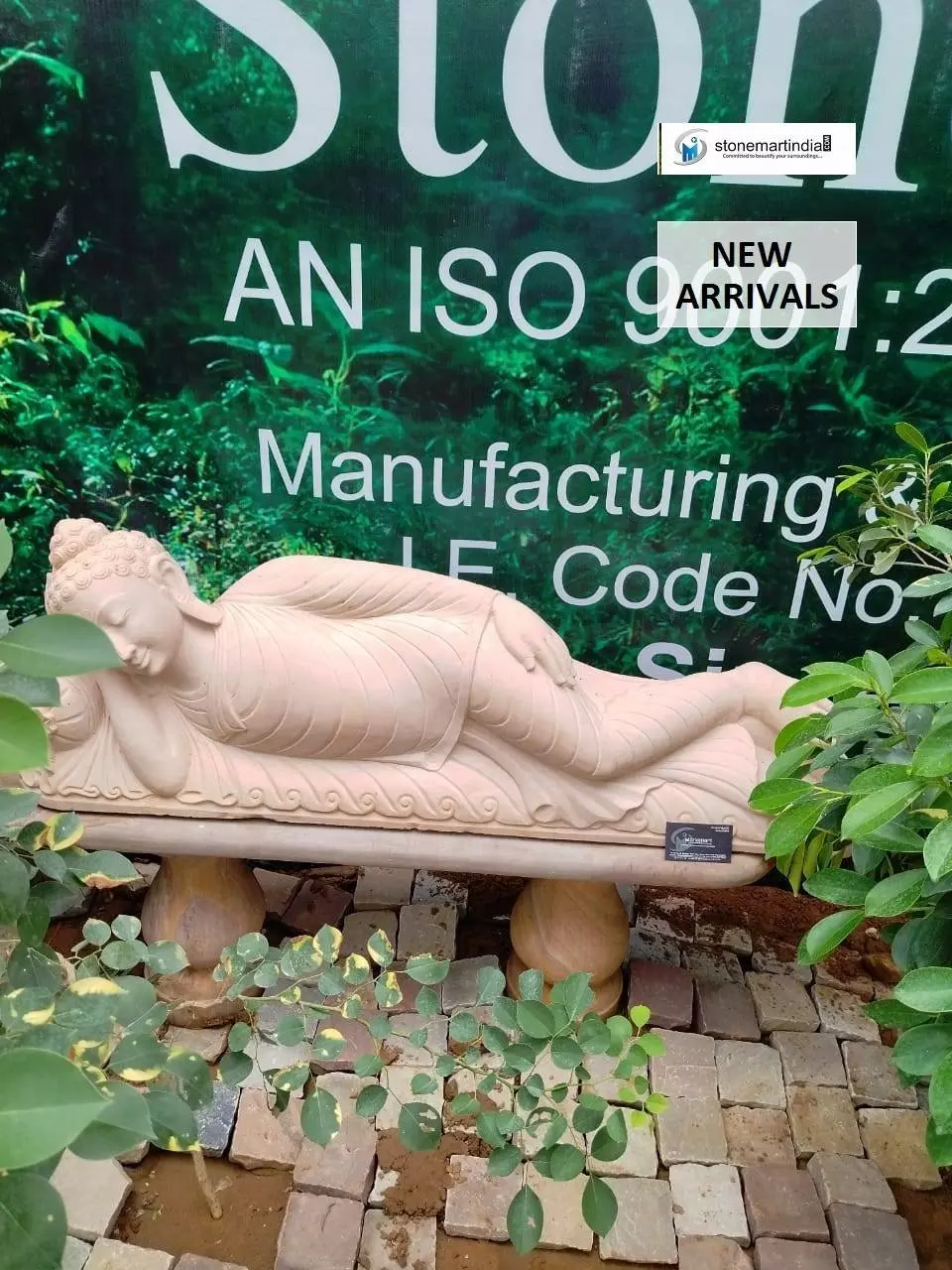
The reclining Buddha, also known as Nirvana Buddha, is a statue originally made from natural stone to portray the last moments of the lord, prior to his attainment of Parinirvana. It is the stage of attaining the great salvation by the lord after his death and eventually break the cycle of rebirth, which is only possible to an enlightened soul.
The Buddha left his mortal body at the age of 80 years in a state of meditation at Kushinagar in the eastern border of the Indian state of Uttar Pradesh. According to the assistant professor, Dr. Vruttant Manwatkar at K C College, Mumbai, “The Nirvana Buddha statue originated from a very well-recorded final moments from the life of the lord. That is why, it can be portrayed in a visual sense with intrinsic details on statues and paintings. Besides, the posture also symbolises the last deeksha of the Buddha to his pupils while being on his deathbed.”
Similarly, Prof Ravindra Panth, a renowned Buddhist scholar and former vice-chancellor of Nava Nalanda Mahavihara deemed university situated in Nalanda, Bihar, “Mahaparinirvana event of the Buddha is regarded as the most significant and spiritual event to take place in Kushinagar. It cannot merely be accounted as a demise, rather the great demise, after which the lord emancipated himself from the birth-rebirth cycle. So, it is celebrated as the ultimate journey of an enlightened body.”
Iconographic Representation of Reclining Buddha in History
When we look at the contexts of history, then we would find numerous Buddha statues and images in his reclining form as lying onto his right side. Normally, the head tends to be showcased as resting on his right elbow or over a cushion. It is one of the most revered iconographic depictions of the lord in Buddhism and symbolise the fact that each sentient being has the potential to be awakened and liberate himself or herself from the constant cycle of birth, death, and rebirth.
“The first depiction of the reclining Buddha can be found in the Gandhara art, which came into existence somehow between 50 BC and 75 AD and attained its peak during the Kushana period between the 1st to the 5th centuries AD,” quoted by Dr Manwatkar. According to Prof Panth, “As the idol worship was not the common practise during the time of the Buddha, the centuries that followed his parinirvana (483 BC), represented his Nirvana through symbols only. As the worshipping and devotional aspects entered the Buddhist practice in future, however, the iconographic representations, especially in the form of reclining stone carved Buddha statue began.
The Presence of Iconic Reclining Buddha Outside India
When we look at the practise of Buddhism in countries like India and Sri Lanka, then we would find that most of the times the lord is showcased in his sitting posture only. The reclining posture of the Buddha is more prevalent in various parts of Southeast Asia, especially the country of Thailand. The largest Reclining (Nirvana) Buddha in the world is claimed to be 600-foot Buddha known to be Winsein Tawya and built in the year 1992 in the city of Mawlamyine, Myanmar.
In the late 15th century, a 70 metre nirvana Buddha Stone statue was built at the Angkor Wat temple site at Baphuon in the country of Cambodia. In South Asia, Khyber Pakhtunkhwa province of Pakistan can witness the historic statue of Bhamala Buddha Parinirvana, dating back to the 2nd century AD. The statue is accounted as the oldest stone statue of its kind across the globe. Besides, there are iconic statues of the Nirvana (Reclining) Buddha in China, Japan, Indonesia, Thailand, and Malaysia.

The Presence of Iconic Reclining Buddha Statues in India
The cave no. 26 of Ajantha Caves, the UNESCO World Heritage Site at Maharashtra, India features a 24 feet length and 9 feet tall stone sculpture of reclining Buddha. The sculpture is believed to be stone carved amidst the 5th century AD. According to Prasad Pawar, a research photographer and restorer from Nashik, “the cave showcases the Buddha reclining onto his right side, and in the backdrop of him there are two Sala trees. The base of the concerned sculpture also does feature his begging bowl, walking stick and a water pitcher. The picturesque landscape in the surroundings also portray his followers in a mourning state, meanwhile the celestial beings rejoicing at the top in anticipation of the arrival of the Buddha to heaven.” Apart from Ajantha, there is one of the most venerated 6-meter-long statues carved out of red sandstone monolith at Kushinagar as well. Here, also, the nirvana Buddha is in his Reclining form inside Parinirvana Stupa, built at the same place where he left his mortal body to reach back his holy abode.
How you can Bring Home a Reclining Buddha Statue?
Sleeping stone Buddha statue is one of the most popular Gautam Buddha statues that one can order online from a reliable manufacturer and supplier in India. We advise you to make a visit to Stonemart and seamlessly explore the most premium and complete collection of reclining Buddha statue for sale at original, uncompromised quality and fully legitimate pricing.
Where to Place Reclining Buddha Statue at your Home?
Please keep in mind that the reclining or nirvana or the sleeping pose of the Buddha is regarded as one of the most poignant moments of life. As he took his last breath, left his earthly belongings to redeem himself from the rebirth cycle of this mortal world. Yet, bringing reclining Buddha stone statue for home does not invite or induce gloom. In fact, the presence of nirvana or reclining Buddha is known to bring in encouragement to the people seeking internal harmony.
Post purchase of the reclining Buddha statue online, it is recommended that you always keep the statue facing west to represent the imminent death of the lord and inclination to the right. It is also suggestive to keep the statue over a clean desk, table, or shelf to help you observe it at the eye level and reflect your inner beliefs and the state of mind. Witnessing the serene statue will always make the person feel at ease and more intact and peaceful to the core of the heart and mind.
